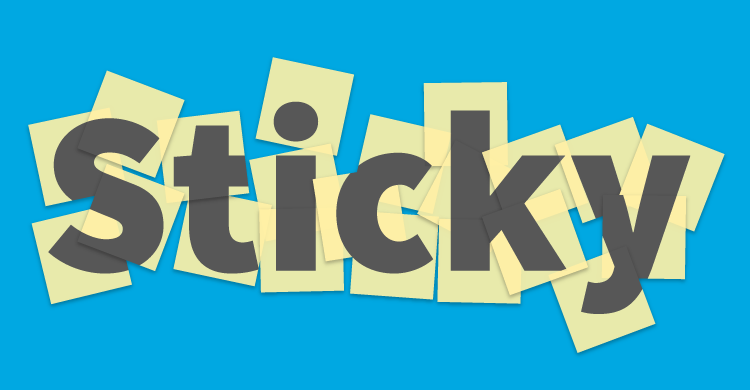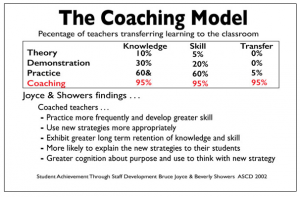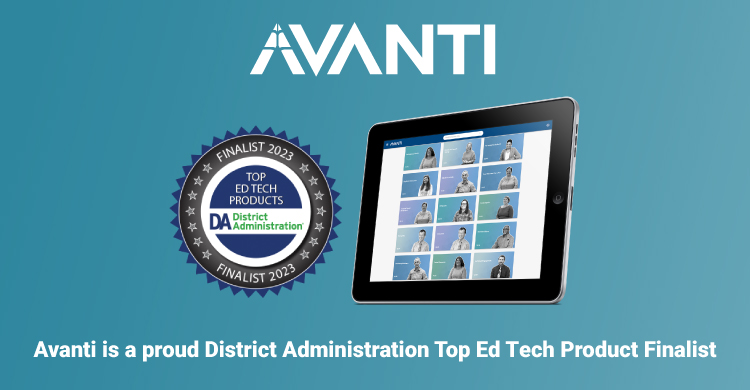Ideally, professional learning is like a Post-it® Note with its infamous 3M, stickiness factor. Common sense holds that all learning is for transfer and application to other situations. To be there when the learner needs it, the original learning must stick like that Post-it® Note. Without this stickiness factor in professional development, the millions of dollars spent on professional learning each year in the US and abroad simply slip away with little or no impact on student achievement and well-being.
The success of professional development can only be determined by measuring the implementation of strategies, the incorporation of concepts and changes in attitudes that teachers are able to transfer from the staff room to the classroom (Joyce and Showers, 2002). Too many times, professional learning is judged based on evaluations filled out by teachers as they are packing up their bags and collecting their car keys. As principals and teachers shift their thinking about the goals of professional learning, they understand that effective PD is best measured by the number and level of applications in the classroom following the professional learning opportunities.
For staff developers, principals, assistant principals, coaches, lead teachers, and change agents in the schools working with adult learners, it is not only desirable, but also an integral part of the expectations that time, energy, and funding result in significant and measurable changes in the pedagogy of the classroom. The stickiness factor is about that authentic implementation of ideas that result in effective transfer and relevant application of the instructional strategies presented. Increasing knowledge and practicing skills within the sessions are not enough to bridge the instructional bridge between adult learning and observable effects on student performance. The final connector comes when the knowledge and skills translate into changes in classroom behaviors. While the idea of stickiness is as concrete as that Post-it® Note, the concept of transfer of learning is much more elusive.
Yet, it is very possible to change the trend and impact the chances for transfer to occur on a regular basis. Noting the startling facts about authentic implementation of professional learning in the classroom, Joyce and Showers (2002) demonstrate the key to this elusive stickiness factor. It is clear in the data that the missing ingredient is the stickiness factor that is the actual demonstrated evidence of the new learning stickiness from the staff room PD to the classroom lessons.
The impact this work has had is summed up in this one comment:
“Thanks for a wonderful workshop . . . on adult learning . . . I implemented the ‘Take-Away Window’ for teaching/strategies modeled . . . This turned out to be an eye-opener for teachers and myself. One activity was for teachers . . . to review a lesson . . . share the strategies they would use to teach the lesson. I was surprised. One hundred percent of the teachers described a whole group, teacher-directed activity. By the end of the workshop, after I had modeled several other strategies and noted them on the ‘Take-Away Window,’ all but one of the teachers shared a lesson that was more respectful of students’ different abilities and learning styles.”
—Karon Massado, Warner Elementary, Wilmington, Delaware
This is the first of four blog posts about the transfer of learning as a PD outcome. The concept of transfer has multiple layers to know and understand in order to be better able to assess the impact of professional leaning. Continuing the discussion, our next posts explore “The Good Shepherd Theory,” “What are the Look-Fors?” “Observable Levels of Transfer,” and “What’s the ‘Take-Away?’”
References
Bruce, J., & Showers, B. (2002). Student achievement through staff development. Alexandria, VA: ASCD.
Perkins, D., & Solomon, G. (1988, September). Teach for transfer. Educational Leadership, 46(1), 22–32.
[author_bio id=”341″]
[author_bio id=”53″]







